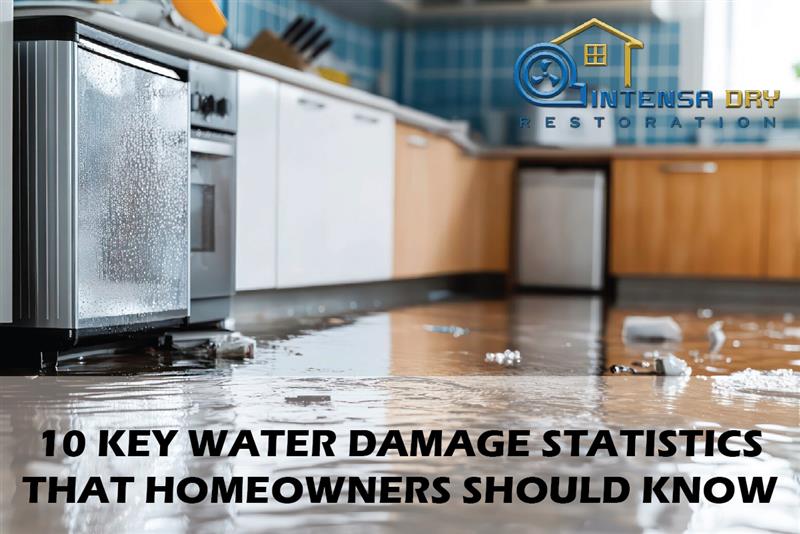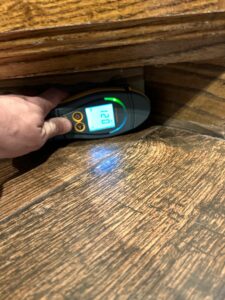Blogs
10 Key Water Damage Statistics That Homeowners Should Know

Water damage is one of those household issues that many people underestimate until it happens to them. Whether it’s a burst pipe, a leaking appliance, or a flooded basement, the impact goes far beyond just a few wet floors. Water intrusion in homes can lead to severe property damage, expensive repairs, and even health risks due to mold growth. In the United States, water damage is one of the leading causes of homeowner’s insurance claims, costing billions annually. Knowing the most critical water damage statistics can help you better protect your home, prepare for emergencies, and save thousands of dollars in restoration costs. Let’s break down the key facts every homeowner should know.
The Costly Reality of Water Damage
Water damage is far more expensive than many homeowners realize. On average, the cost of water damage restoration in the U.S. ranges from $3,000 to $8,000, depending on the severity. In cases of major flooding or burst pipe water damage, repair bills can easily exceed $15,000. These figures don’t even include long-term losses such as decreased property value or hidden water damage in homes that may not be discovered for months.
Property damage from water leaks is one of the most common insurance claims. Annual water damage claims account for billions of dollars in payouts by homeowner’s insurance providers. For homeowners, understanding water damage costs can help highlight why preventive maintenance and quick action are essential.
Home Water Leaks Statistics You Can’t Ignore
One of the most surprising facts is how often water leaks occur in residential properties. Studies show that household water damage risks affect about 14,000 people in the U.S. daily. A small leak, such as a dripping faucet or a pinhole in a pipe, can waste hundreds of gallons of water per year. These minor leaks often become severe water damage that costs homeowners dearly when left unchecked.
Even more concerning is that hidden water damage in homes often goes unnoticed until it becomes a large-scale problem. When a leak is visible, mold growth after water damage may spread inside walls, leading to health issues and increased cleanup costs.
The Rising Threat of Flooding
Flooding statistics show that floods are the most common and costly natural disaster in the United States. Homeowners are often surprised to learn that even one inch of water in a basement can result in over $25,000 in damage. Basement flooding statistics also reveal that homes in areas with poor drainage or older sewer systems are especially at risk.
The problem is compounded by the fact that many homeowners don’t realize standard homeowner’s insurance doesn’t always cover flooding. This leaves families financially vulnerable if they don’t take preventive measures or invest in flood insurance. Flooding can happen anywhere, not just in FEMA-designated flood zones, making water intrusion in homes a universal risk.
Mold Growth After Water Damage
Mold is one of the most dangerous consequences of water damage. It can begin forming in as little as 24 to 48 hours after exposure to moisture. Mold growth after water damage doesn’t just damage walls and flooring—it also poses serious health risks. Respiratory issues, allergies, and long-term illnesses have all been linked to mold exposure.
The average cost of mold remediation following water damage adds an extra layer to overall restoration expenses. Mold removal can run between $2,000 and $6,000, depending on the extent of the growth. These figures highlight the urgency of emergency water damage cleanup to reduce the risk of mold developing.
Insurance Claims for Water Damage
Insurance claims for water damage are among the top reasons homeowners file claims. In fact, water damage and homeowner’s insurance claims account for nearly one-quarter of all claims made each year. However, not all types of water damage are covered. For example, damage caused by neglect or gradual leaks is often excluded, leaving homeowners to pay out of pocket.
Annual water damage claims cost insurance companies billions, but the average payout per household still leaves homeowners covering additional expenses. Understanding your policy, knowing what is covered, and asking about water damage prevention tips can make a big difference when disaster strikes.
Common Causes of Water Damage in Homes
The sources of residential water damage data point to several culprits. Burst pipe water damage is a leading cause, especially during winter when pipes freeze and expand. Appliance malfunctions, like washing machine or dishwasher leaks, are responsible for thousands of insurance claims annually.
Roof leaks, clogged gutters, and poor lawn grading can contribute to household water damage risks. Even HVAC systems, when not properly maintained, can create condensation leaks that slowly damage ceilings and walls. These common causes of water damage underline the importance of regular inspections and preventive maintenance around the home.
Emergency Water Damage Cleanup and Prevention
When water damage occurs, time is critical. Emergency water damage cleanup should begin within the first 24 hours to minimize losses and reduce the chance of mold spreading. Professionals use specialized equipment to remove water quickly, dry affected areas, and restore damaged property.
At the same time, water damage prevention tips are just as essential. Simple steps such as installing a sump pump, maintaining gutters, insulating pipes, and checking appliances regularly can prevent expensive repairs. The sooner homeowners act, the less likely they are to become part of the costly water damage repair statistics.
The Long-Term Risks of Hidden Water Damage
Not all water damage is immediate or obvious. Hidden water damage in homes often goes unnoticed for weeks or months, slowly weakening structural components and fueling mold growth. Common trouble spots are behind walls, beneath flooring, and in basements.
The long-term impact includes reduced property value and significant structural issues that may require thousands of dollars to repair. Homeowners should consider regular inspections, especially after storms, to identify potential risks early. Preventing hidden water damage saves money and preserves the safety and comfort of your home.
Wrap-Up
Water damage is more than an inconvenience—it’s one of the most costly and widespread problems homeowners face. From household water leaks to basement flooding statistics, the numbers tell a clear story: prevention and immediate action matter. Burst pipe water damage, mold growth after water damage, and property damage from water leaks can all drain your finances and compromise your family’s health. Homeowner’s insurance may cover some costs, but not all, which makes awareness and preparedness essential. Homeowners can significantly reduce risks by learning these key water damage facts and applying water damage prevention tips. Remember, safeguarding your property today means saving thousands in water damage costs tomorrow.
FAQs
1. What is the average cost of water damage restoration?
The average cost of water damage restoration in the U.S. ranges from $3,000 to $8,000, though severe cases can exceed $15,000.
2. How quickly does mold grow after water damage?
Mold growth after water damage can start within 24 to 48 hours, making fast cleanup essential to prevent health and property risks.
3. Are all water damage types covered by insurance?
No. Insurance claims for water damage usually exclude gradual leaks or neglect. Flooding is typically not covered without separate flood insurance.
4. What are the most common causes of water damage?
Burst pipes, appliance leaks, roof issues, clogged gutters, and poor drainage are among the leading household water damage risks.

